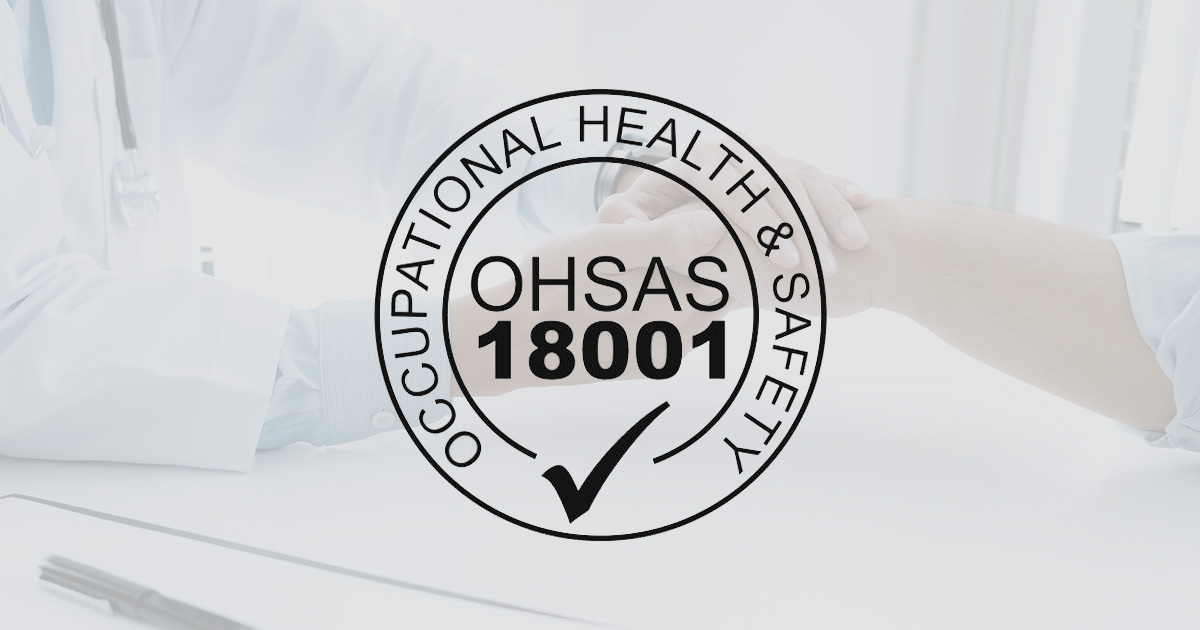Introduction to OHSAS Standard 18001
In today’s fast-paced work environment, ensuring the health and safety of employees has never been more crucial. Enter OHSAS Standard 18001, a benchmark for organizations striving to create safer workplaces. This standard provides a framework that helps businesses identify hazards, manage risks, and implement effective occupational health and safety practices.
But what exactly is OHSAS 18001? Why should your organization consider adopting it? As we dive into this comprehensive guide, you’ll uncover the history behind the standard, its key components, benefits of implementation, and practical steps to achieve compliance. Whether you’re a seasoned professional or just stepping into the world of workplace safety standards, understanding OHSAS 18001 could be a game-changer for your organization’s culture and productivity. Let’s explore how you can transform your approach to health and safety with this essential standard!
History and Development of the Standard
The OHSAS Standard 18001 was first introduced in 1999. It aimed to provide organizations with a framework for managing occupational health and safety risks. The standard gained traction as industries recognized the need for structured safety management systems.
Developed by a group of international standards bodies, OHSAS 18001 served as an essential tool for improving workplace safety across various sectors. Over time, it underwent revisions to remain relevant amidst evolving workplace practices and safety regulations.
By incorporating best practices from around the globe, the standard offered businesses a comprehensive guide to enhance their health and safety performance. This evolution reflected growing awareness about employee welfare and organizational accountability.
As companies strived for certification, OHSAS 18001 became synonymous with commitment to creating safer work environments. Its influence paved the way for further advancements in occupational health standards worldwide.
What is included in OHSAS 18001?
OHSAS 18001 provides a structured framework for organizations to manage occupational health and safety risks. It emphasizes the importance of proactive risk management.
The standard includes key elements such as hazard identification, risk assessment, and control measures. These components help organizations understand potential dangers within their workplace environment.
Another critical aspect is legal compliance. OHSAS 18001 encourages businesses to stay updated on relevant legislation, ensuring they meet all health and safety obligations.
Additionally, it promotes employee involvement by fostering a culture of continuous improvement. This engagement ensures that staff are aware of hazards and contribute to developing safer practices.
Documentation plays a significant role too. The standard requires maintaining records related to incidents, audits, and training sessions—essential for tracking performance over time.
OHSAS 18001 mandates regular reviews of the system’s effectiveness. Continuous monitoring ensures that safety standards evolve with changing workplace dynamics and regulations.
Benefits of Implementing OHSAS 18001
Implementing OHSAS 18001 brings a wealth of benefits to organizations. It fundamentally enhances workplace safety, reducing the risk of accidents and injuries.
With improved health and safety practices, companies often see a boost in employee morale. When workers feel secure, productivity naturally increases.
Furthermore, adhering to OHSAS 18001 can lead to significant cost savings. Fewer incidents mean lower insurance premiums and reduced costs related to worker compensation claims.
Another key advantage is enhanced reputation. Clients and stakeholders appreciate organizations committed to maintaining high safety standards.
Compliance with this standard can facilitate smoother operations during audits or inspections. This proactive approach establishes a culture of continuous improvement within the organization’s health and safety management system.
Steps to Achieving Compliance with OHSAS 18001
Achieving compliance with OHSAS 18001 involves several key steps that organizations must follow.
First, conduct a thorough assessment of your existing health and safety policies. Identify gaps between current practices and the OHSAS standard requirements.
Next, establish an occupational health and safety management system (OHSMS). This system should include clear objectives, procedures, and responsibilities to ensure proper implementation.
Training is essential for all employees. Provide them with the necessary information about hazards in their work environment and the importance of following safety protocols.
Regular audits play a crucial role in maintaining compliance. Schedule these assessments to evaluate how well the organization adheres to the established standards.
Engage top management in promoting a culture of safety within your organization. Their commitment can drive continuous improvement throughout all levels of staff involvement.
Case Studies of Successful Implementation
One notable case study involves a manufacturing company that implemented OHSAS 18001 to enhance workplace safety. After rigorous training and establishing new protocols, the organization saw a significant reduction in accidents—down by 40% within the first year.
Another example is found in the construction sector. A major contractor adopted OHSAS 18001 to standardize health and safety practices across its sites. This initiative not only improved employee morale but also led to fewer project delays tied to safety incidents.
A healthcare provider is yet another success story. By integrating OHSAS 18001, they streamlined incident reporting systems, which fostered a culture of transparency and accountability among staff members.
These cases highlight how diverse industries can tailor OHSAS 18001 principles effectively, demonstrating its versatility as a framework for promoting health and safety standards in various work environments.
Comparison to Other Health and Safety Standards
OHSAS 18001 is often compared to ISO 45001, which has become the global benchmark for occupational health and safety management systems. While OHSAS focuses primarily on risk management, ISO 45001 emphasizes a more holistic approach, integrating organizational culture and worker participation.
Another noteworthy standard is ANSI Z10. This American national standard places significant importance on continual improvement and employee involvement in safety processes. Unlike OHSAS 18001, it encourages organizations to create a proactive rather than reactive safety culture.
UK’s HSG65 also deserves mention as it offers a framework similar to OHSAS but with an increased focus on leadership commitment. The alignment between these standards allows companies flexibility in choosing their compliance path while addressing varying regulatory requirements across regions.
Organizations transitioning from OHSAS may find that aligning with ISO 45001 can enhance their overall performance by adopting international best practices tailored for health and safety management.
Challenges and Criticisms of OHSAS 18001
OHSAS 18001 has faced its share of challenges and criticisms over the years. One major concern is that it can be overly complex, making implementation daunting for smaller organizations. The requirements may feel overwhelming, leading to a lack of engagement from employees at all levels.
Additionally, some critics argue that the standard focuses too much on documentation rather than practical application. This focus can create a box-checking mentality rather than fostering genuine safety improvements in the workplace.
Integration with other management systems also poses difficulties. Organizations often struggle to align OHSAS 18001 with ISO standards or industry-specific regulations seamlessly.
There are questions about its effectiveness in preventing workplace accidents. While many companies report benefits from compliance, skeptics highlight instances where adherence did not lead to significant reductions in incidents or injuries.
Conclusion:
OHSAS Standard 18001 has served as a vital framework for organizations aiming to enhance their occupational health and safety management systems. Since its inception, it has evolved to address the growing need for effective workplace safety protocols.
Companies that choose to implement this standard gain numerous advantages, including improved employee morale and reduced incident rates. The structured approach encourages continuous improvement, ultimately leading to a safer working environment.
Achieving compliance with OHSAS 18001 may seem daunting, but by following clear steps and learning from successful case studies, organizations can navigate the process effectively. Understanding how OHSAS compares with other standards also provides valuable insights into selecting the appropriate framework for specific business needs.
While challenges exist—ranging from resource allocation to addressing criticisms—the benefits often outweigh these hurdles when properly managed. Companies committed to fostering a culture of safety will find that adhering to OHSAS 18001 not only meets regulatory requirements but also enhances overall operational efficiency.
Embracing such standards sets an organization apart in today’s competitive landscape where corporate responsibility is paramount. Investing in robust health and safety practices is not just about compliance; it’s about creating sustainable growth through safe workplaces that prioritize well-being above all else.

















